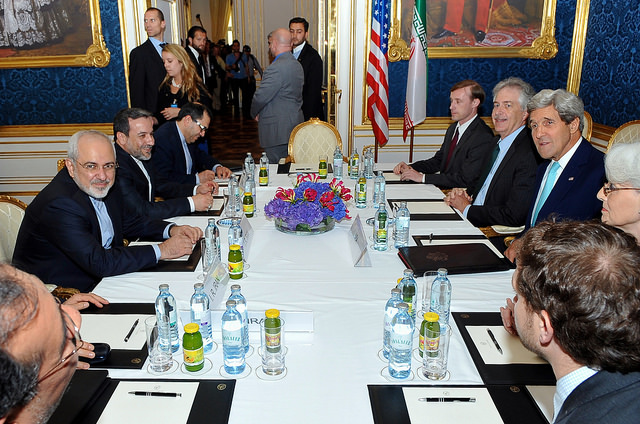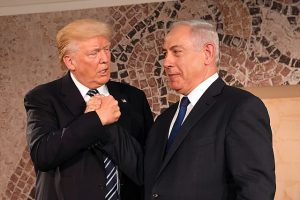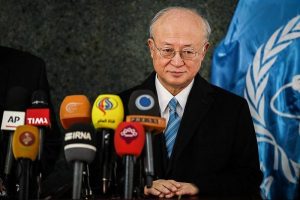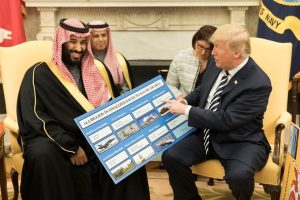by Peter Jenkins
On the face of it, July has not been a bad month for those of us who would like to see the West’s nuclear quarrel with Iran resolved peacefully, not least so that the US, EU and Iran can feel less inhibited about regional security cooperation, and so that trade and investment can resume, sanctions having created hardship not just for ordinary Iranians but also for many EU companies.
However, I find it hard to feel confident that on November 25 (or before) we will be celebrating a peaceful resolution — and victory over those in the US Congress and elsewhere who so clearly do not want the negotiations between Iran and world powers to succeed.
My pessimism stems from continuing signs in official statements and media reports that the US administration, somewhat oblivious to logic, is determined to get a deal that would make the Iranian manufacture of nuclear weapons a practical impossibility.
Let me explain why logic is involved. A rational policy has to rest on one of two assumptions:
a) Iran is determined to acquire nuclear weapons and will do so sooner or later unless it is deprived of all means of producing weapon-grade material;
b) Iran is not decided on acquiring nuclear weapons and can be discouraged and deterred from ever embarking on weapon acquisition by a well-founded diplomatic agreement.
If one’s starting point is assumption a), then there is no point in negotiating with Iran because it has become crystal clear since 2003 that Iran will not voluntarily close all facilities that could be used to produce weapon-grade material or eradicate all the related knowledge that has been acquired. Instead, the logical policy would be to establish a 100-year US/EU presence in Iran, dismantle all nuclear facilities and workshops, and put all of Iran’s nuclear scientists and engineers in internment camps. Let us label this “policy x.”
If one’s starting point is assumption b), then the logical policy is to negotiate an agreement that will minimize the risk of Iran’s leaders ever deciding to ignore their Nuclear Non-Proliferation Treaty (NPT) obligations and misuse their nuclear facilities and know-how to produce nuclear weapons. A risk-minimizing agreement is one that provides for extensive external inspection and monitoring of Iran’s use of nuclear materials, and that offers Iran gains that it would be sure of losing were it to decide to embark on weapon acquisition. Let us label this “policy y.”
On the evidence to date, the US and EU have opted for assumption b) but are trying to negotiate an outcome that falls between the goals of policy x and policy y. That is to say, they are pressing Iran to cut the number of centrifuge machines at its disposal to a point where Iran’s theoretical fissile material production capacity would be negligible, and to abandon its efforts to develop more advanced centrifuge models. Let us call what they are seeking a hybrid outcome.
What is impelling them down this path? As far as I can tell, it is a belief that they need a deal that can be sold to a large majority in Congress.
The problem with that objective is that many in Congress have accepted the Israeli line on Iran’s nuclear program and Israel’s Prime Minister is committed to assumption a). These members of Congress are not going to be impressed by a hybrid outcome. They want the full-blooded dismantlement of Iran’s nuclear capabilities that policy x would offer. They will see through the fiction that cutting back Iran’s declared centrifuge capacity to 3000 machines for 20 years or whatever (a Mickey Mouse enrichment program) means that Iran “cannot” acquire nuclear weapons.
And the Iranian government would rather the negotiations fail than commit political suicide by signing on to a Mickey Mouse program.
What’s needed, therefore, is for the US and EU to use the coming month to revisit their assumptions about Iran’s intentions. If they arrive at the conclusion, after all, that Iran is intent on acquiring nuclear weapons, then they should bring the negotiations to a close and set about preparing for war, with a view to offering Israel the prize for which they have long clamored: the dismantlement of Iran’s nuclear “infrastructure.”
If, on the other hand, they conclude that assumption b) remains valid, then they should have the courage of their convictions and should ask of Iran the following: International Atomic Energy Agency (IAEA) access to Iran’s nuclear program extending well beyond what is required by the NPT, the progressive resolution of all IAEA concerns, a raft of voluntary confidence-building measures, and a reaffirmation, at the United Nations, at the IAEA, and at the 2015 NPT Review Conference, that Iran does not seek and will not seek nuclear weapons.
Some will underestimate the deterrent strength of such an agreement because they cannot grasp that the psychological determinants of human decisions are as important as the material products of human ingenuity. But many others will understand the deterrent pressure on Iran of knowing that any move towards weapon acquisition is not only likely to be detected by the IAEA but will also cause immense damage to the reputation of a state that requires a good name to make its way in the world.
I witnessed the loss of prestige that Iran suffered in 2003 when members of the IAEA heard that Iran had pursued “a policy of concealment” for 18 years. I find it very hard to believe that Iran’s ruling elite can or will want to risk a repeat of that humiliation. Ten years later, I believe they have learnt their lesson.
Such considerations will cut no ice in some parts of Congress, I realize. But the administration has a trump card: the wisdom of crowds; that is to say, the good sense of the American people. The American people showed a year ago that they could understand that a constructive outcome to the use of chemical weapons in Syria — Syrian adherence to the Chemical Weapons Convention — was preferable to killing yet more Syrians. They will surely understand that deterring the misuse of the nuclear technologies that Iran has mastered is preferable to killing a whole lot of Iranians — and adding to the long US casualty lists bequeathed to the nation by President George W. Bush.
Photo: US Secretary of State John Kerry sits across from Iranian Foreign Minister Mohammad Javad Zarif in Vienna, Austria, on July 13, 2014, before beginning a bilateral meeting focused on Iran’s nuclear program. Credit: State Department






Thank you Peter for one of the only objective analysis In our media. Let’s look at an assumption C. In order to launch a nuclear weapon,there would need to b some sort of testing. Certainly such activity would be detected long before the man with his finger on an alleged metaphorical “red button” pulled up his jeans in the morning .Iran fully realizes this and suicide is not a path they follow. Do realize that of the many “suicide bombers “, not one has been an Iranian?